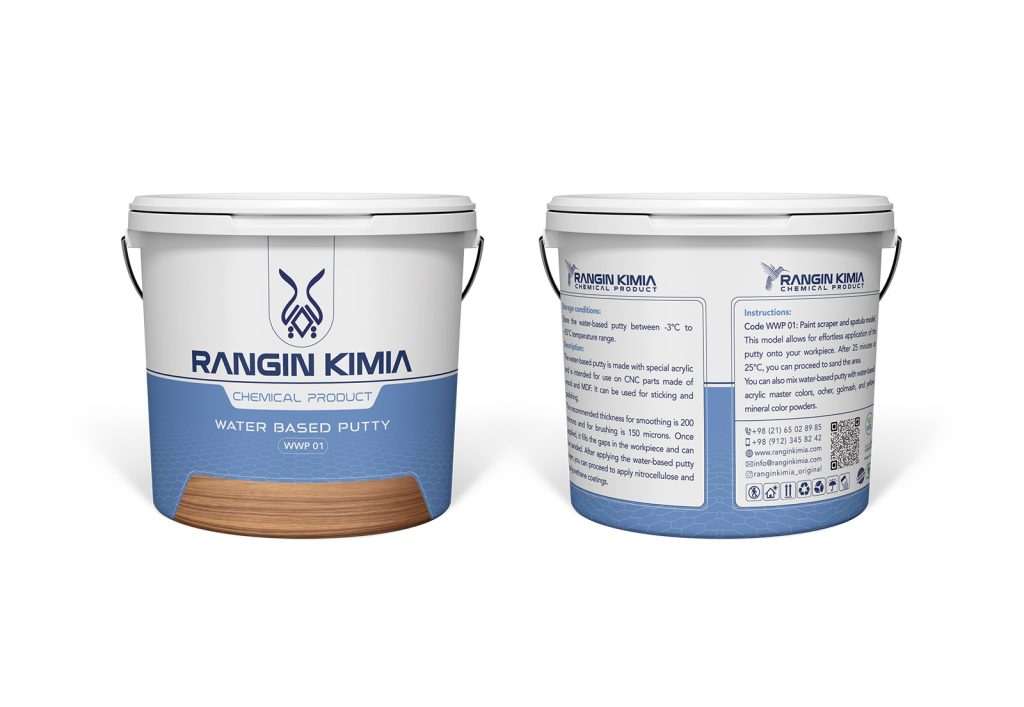
Water-based paints were first introduced in 1990 in the European Union by the German BASF company, and the reason for this is the price fluctuations of petroleum products, changes in the improvement and upgrading of environmental standards, the phenomenon of global warming, and efforts to reduce CO2 greenhouse gases. The use of environmentally friendly materials and reducing the level of polluting gases, which is called LOW VOC, was placed in the first line of research and development of companies producing chemicals, especially in the paint and coating industry, the initial strategy was based on the physical properties and the chemistry of a water-based coating with an oil-based coating can be maintained to a large extent, but the emission level is close to zero, and this option in industrial paints is the use of water-soluble resins or water-emulsifiable resins, which include poly-acrylic resins Styrene, Pure Acrylic, Polyvinyl Acetate Acrylic, Polyurethane Dispersion PUD are one-component and two-component.
The mechanism of drying and hardening in these coatings is first associated with an increase in the rate of evaporation of water from them, and then the resin blocks get closer to each other and produce hydrogen and Van der Waals bonds, and in this way, the polymer network of the paint film is formed in them.
The color base resin blocks in the water based system are either soluble in water or in the form of micelles or emulsions. However, water-based paints also contain amounts of glycolic solvents, which help to better mix the components of the formula and improve the surface evaporation of water.
This technique of water-based paints is also used to make filling putties in the wood industry, as water-based pure acrylic resins have a high penetration coefficient in wood cellulose fibers due to their high polarity, and the presence of water causes penetration. The better it gets, this feature can be used to fill springs and defects in the first layer of a wooden or MDF surface, on the other hand, acrylic has the property of being compatible and forming a chemical bond with wood cellulose fibers or phenol formaldehyde glue that MDF has, and also nitrocellulose lining layers and oil-based polyurethane are compatible with it. Therefore, it can be used to make filler liners or blue-based filler putty.
Water-based putties are made with mineral fillers and pigments, such as white, yellow ocher, brown, and with a density between 2 and 2.3 grams per millimeter, they have the ability to fill and penetrate inside wood and MDF fibers.
These products are mostly used in the CNC parts of a wooden or MDF board, or the cut or Persian edges of the work piece. Applying a layer of putty in the form of smoothing, brushing, or brushing will cause some amount of putty to penetrate into the fibers of the work piece and cause the springs to fill, after about half an hour when the solvents and water of the putty have completely evaporated. Now, it has the ability to be sanded by hand or machine, and then it is completely peeled to the extent that only particles filled with putty can be seen on the surface of the work piece.
Rangin Kimia’s blue-based white putty is supplied with two product codes based on two types of use:
This product is designed with an excellent spatula to be applied to the work piece in the form of a thick coating and a thin coating (onion skin), and in addition to high coverage, it also has excellent penetration and filling power.

This putty is similar to WWP 01 putty in terms of drying and penetration, with the difference that in addition
The properties of spatula and lick that can be diluted with a little water and sprayed with a brush
It can also be applied with a 2 millimeter nozzle gun and the fillers will not deposit in the container for about two hours.

Both products have excellent interlayer adhesion properties and favorable sanding properties and today
Many manufacturers use these Rangin Kimia products in their production line.